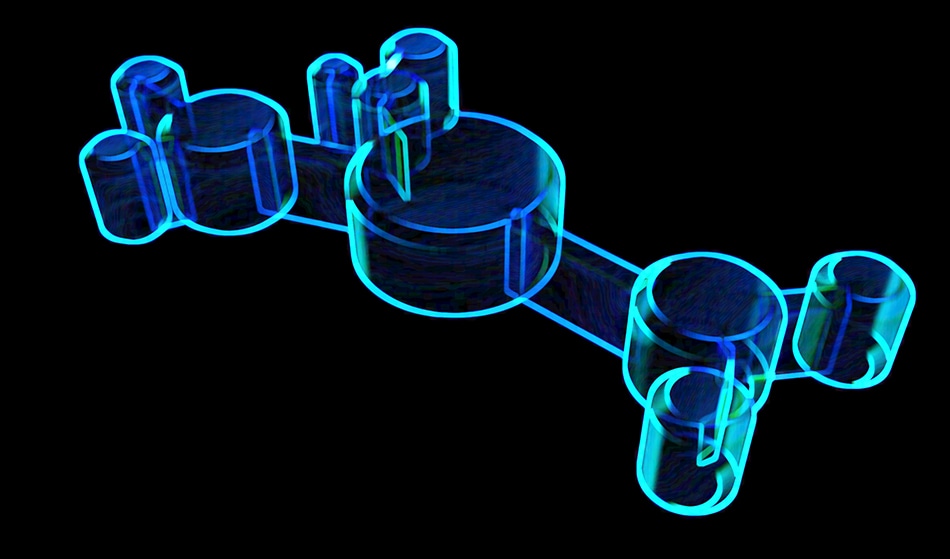Carrying out biomedical tasks in living systems using micro and nanomotors has gained significant interest of late. These motors can often be controlled remotely using various type of fields to study biomedical phenomenon. A team from India have now created helical nanomotors which can penetrate and maneuver inside a cell using a rotating magnetic field, without introducing any adverse effects on the cell itself.
The ability for nanomotors to enter a cell and manipulate itself through the intracellular space is not new. However, the ability to prevent damage being done to the cells is indeed novel, as many techniques before it has caused a perturbation in the cell volume. Previous efforts have utilized chemical, magnetic, acoustic and electrical fields, but the team from India have been able to control these new nanomotors using small rotational magnetic fields remotely.
 Image credit: GiroScience/Shutterstock
Image credit: GiroScience/Shutterstock
The researchers created the nanomotors (also referred as a type of nanoprobe) using a glancing angle deposition (GLAD) method. Using this, the researchers created 3D nanostructured films before turning them into helical nanostructures.
There were two types of nanomotors used in the research, and both differed in the size of the seeding layer used to create the pillars that supported the nanomotors. The pillars had a height of 1 µm and diameters of 500 nm and 200 nm, respectively. Silica helices were grown onto the pillars using the GLAD method at an extreme angle (5°). The pitch of the helices was determined by the rotational rate during the GLAD method, and the nanomotors were deposited onto a magnetic layer using thermal, or electron-beam, evaporation techniques.
Once in the cells, the researcher actuated the nanomotors using a rotating magnetic field generated by a triaxial Helmholtz coil. To image then nanomotors in the cells, the researchers used a bright-field Zeiss LSM 880 confocal microscope.
For the first time, the researchers have managed to manipulate the cell and internalize helical nanomotors without causing any damage to the cell itself, including not perturbing the volume of the cell as seen with other methods. The nanomotors are operated remotely (both fuelling and guidance) and this limits the effect that mechanical transduction has on the cells containing probes.
The researchers tested the nanomotors on three different cell types, containing both cancerous and non-cancerous cells, to the analyze, and simultaneously engineer, the motion of the helical propeller through the intracellular space. The researchers could tune the motion of the nanomotor (i.e., forward and backward movements) by tuning the sense of rotation of the field, as well as the handedness of the helix. Out of the two nanomotors created, the smaller motor was found to be much more effective in navigating the intracellular environment, and this is mainly due to its smaller size and only needing to deviate by 10-15° to move through a cell.
The researchers found that the motion of the motors was strongly sensitive to the localized mechanical properties of the intracellular environment, and the motor moved anisotropically to navigate through the cell. The ease of control in which the researchers were able to move through the cell with this nanomotor means that these systems could potentially be used to deliver a drug payload directly into the cytoplasm of the cell.
The study has provided sufficient evidence of a strong anisotropy, heterogeneity, and spatiotemporal variability found within the inside of the cell. Future studies could be taken further to make quantitative estimates about the local rheological properties of the cell by observing how the nanomotors move through the cellular environment.
Tools are always being sought to probe the interior of a cell, and helical magnetic nanoprobes could potentially be the method of the future.
Source:
“Maneuverability of Magnetic Nanomotors Inside Living Cells”- Pal M., et al., Advanced Materials, 2018, DOI: 10.1002/adma.201800429
Disclaimer: The views expressed here are those of the author expressed in their private capacity and do not necessarily represent the views of AZoM.com Limited T/A AZoNetwork the owner and operator of this website. This disclaimer forms part of the Terms and conditions of use of this website.